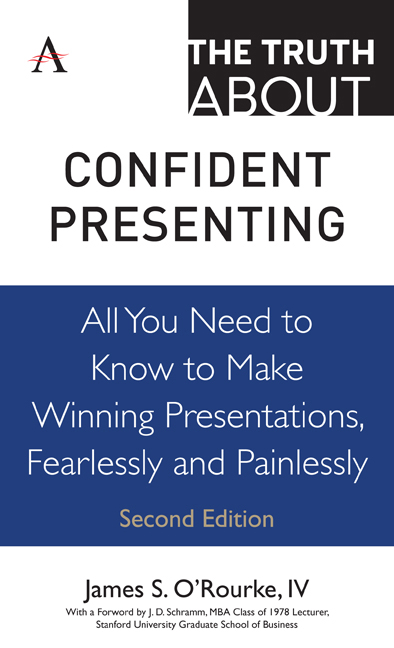 The Truth about Confident Presenting
The Truth about Confident Presenting Book contents
- Frontmatter
- Contents
- Foreword
- Introduction
- Part I Some Initial Truths
- Part II The Truth About Getting Ready to Speak
- Truth 7 Talk is the work
- Truth 8 Know what your audience is looking for
- Truth 9 There is a difference between speaking and writing
- Truth 10 Preparing a presentation is a relatively simple process
- Truth 11 Begin by analyzing your audience
- Truth 12 Know your audience
- Part III The Truth About What Makes People Listen
- Part IV The Truth About Developing Support for Your Presentation
- Part V The Truth About Getting Up to Speak
- Part VI The Truth About Managing Anxiety
- Part VII The Truth About Nonverbal Communication
- Part VIII The Truth About Visual Aids
- Part IX The Truth About Handling an Audience
- Part X The Truth About What Makes a Presentation Work
- References
- Acknowledgments
- About the Author
Truth 11 - Begin by analyzing your audience
from Part II - The Truth About Getting Ready to Speak
- Frontmatter
- Contents
- Foreword
- Introduction
- Part I Some Initial Truths
- Part II The Truth About Getting Ready to Speak
- Truth 7 Talk is the work
- Truth 8 Know what your audience is looking for
- Truth 9 There is a difference between speaking and writing
- Truth 10 Preparing a presentation is a relatively simple process
- Truth 11 Begin by analyzing your audience
- Truth 12 Know your audience
- Part III The Truth About What Makes People Listen
- Part IV The Truth About Developing Support for Your Presentation
- Part V The Truth About Getting Up to Speak
- Part VI The Truth About Managing Anxiety
- Part VII The Truth About Nonverbal Communication
- Part VIII The Truth About Visual Aids
- Part IX The Truth About Handling an Audience
- Part X The Truth About What Makes a Presentation Work
- References
- Acknowledgments
- About the Author
Summary
Dartmouth business Professor Mary Munter says that analyzing an audience involves answering four questions: (1) Who are they? (2) What do they know? (3) How do they feel? And, (4) How can you motivate them? If you can answer those, you are well on your way to crafting a presentation that's engaging, useful and worth listening to.
Who are they? Audiences may be seen according to the roles or functions they play in the communication process. Your primary audience is composed of those who will receive your message directly. They're the folks in the room who are paying attention to what you say and what you show them. The secondary audience is that collection of people who will receive your message indirectly. They could be family, friends, co-workers or associates of those in your primary audience. Consider who may be hidden from view as you speak to this particular group. Could a reporter hear about this from someone in the room? What about a competitor or a business partner? Knowing who is in the audience may be crucial to achieving your goals for the presentation.
What do they know? As you prepare for a presentation, you should ask yourself how much background information your audience will need. How much new information will they require to do what you ask of them? The more they know, the less you have to give them, provided that what they know is current, accurate and relevant.
What are their expectations and preferences? Each audience has a preference for the style, channel and format of a presentation. Even if they exhibit preferences similar to your own, it's still useful to know what they prefer. Do they like (or expect) a direct or indirect style? That's mostly a cultural determination, of course; the vast majority of North American business managers say that they prefer a direct approach: tell me what you want, then support the request. Reveal up front what your purpose is and what you expect of the audience. Only when you know (or suspect) the audience disagrees with you should you delay revealing your rhetorical purpose. Communicate with an audience in its preferred style and format and they'll reward you with their time and attention.
- Type
- Chapter
- Information
- The Truth about Confident PresentingAll You Need To Know To Make Winning Presentations, Fearlessly And Painlessly, pp. 41 - 44Publisher: Anthem PressPrint publication year: 2019


